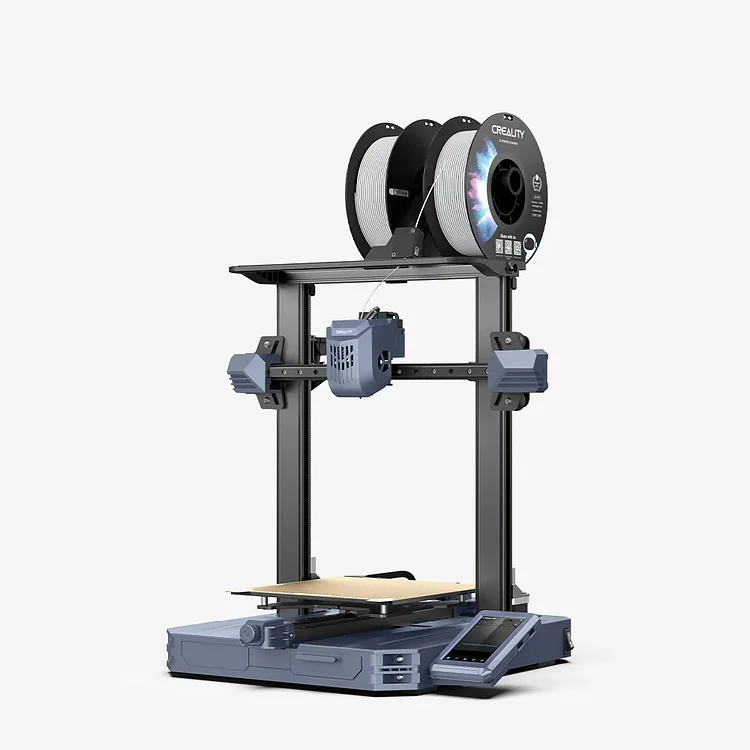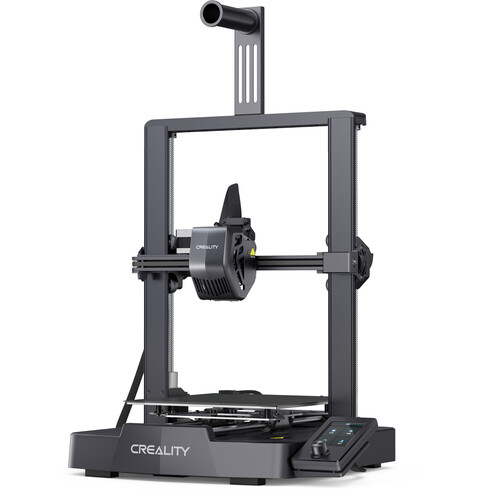Compare CR10 SE vs Ender 3 V3 SE
Comparison between the best 3D printers
Choose the best 3D printer at the best price. The cheapest 3D printers are here.
Buy a 3D printer here with 3D Fila.
 |
 |
|
| Model | CR10 SE |
Ender 3 V3 SE[BUY Ender 3 V3 SE] |
| Printing Material | Filament | Filament |
| Buy Filament for Creality CR10 SE | Buy Filament forCreality Ender 3 V3 SE | |
| Estimated price | $386,00 | $199,00 |
| Manufacturer | Creality | Creality |
| Release Year | 2023 | 2023 |
| Print Volume [mm] | 220x220x265 | 220x220x250 |
| Printer Size [mm] | 490x470x625 | 420x366x490 |
| Weight [kg] | 6,9 | 7,34 |
| Power Loss Recovery | NO | NO |
| Enclosed printer | NO | NO |
| Bed Leveling | Automatic | |
| Filament End Sensor | NO | NO |
| Bed type | Heated | |
| Power supply system | Direct Drive | Direct Drive |
| Standard nozzle | 0,4 | 0,4 |
| Maximum Nozzle Temperature [°C] | 300 | 260 |
| Maximum Bed Temperature [°C] | 110 | 100 |
| Maximum printing speed [mm/s] | 600 | 250 |
| Filament holder | YES | YES |
| Camera for supervision | YES | YES |
| Recommended filaments | PLA, PETG, PET, TPU, PA Wood, ABS, ASA, PA, PLA-CF | PLA, PETG e TPU (95A+) |
| Recommended slicers | Creality Print, Cura, Simplify3D, PrusaSlicer, Orca Slice | Creality Print, Cura 5.0 ou superior, Prusa Slicer, Orca |
| Maximum Resolution [mm] | 0,1 | 0,1 |
| Processor | 32-bit Silenciosa | |
| Display | 3,2'' + Knob | |
| Power Supply | 350 W | |
| Connectivity | USB, Wifi | SD |
| Operating systems | Windows, Linux, Macbook | Windows, Linux, Macbook |
| Date of registration in the system | 2024-07-02 | 2024-03-06 |
| Release date | 2023 | 2023 |
| Extra features | The Creality CR10 SE stands out for its printing speed of up to 600 mm/s, easy and intuitive assembly, direct extruder with double gears, hotend with hardened steel nozzle and ceramic heater, automatic leveling with CR-Touch and pressure sensor, and use of Creality OS firmware based on Klipper, with automatic input shaping calibration. It also includes Wi-Fi connectivity, a filament out-of-stock sensor and a robust structure with linear rails on the X and Y axes. | The Ender 3 V3 SE stands out for its easy assembly, excellent automatic bed leveling, direct extrusion and easy interface, ideal for beginners. Although it uses a coated PC board, it offers robust performance, with print speeds of up to 250mm/s, thanks to a solid construction and linear rods on the Y axis. It lacks Wi-Fi, preferring file transfer via SD card. |
| Support for multiple colors and materials (AMS and CFS) | NO | NO |
Notes * |
||
| Cost-benefit | 7 / 10 | 7 / 10 |
| Hardware | 2.1 / 10 | 0.7 / 10 |
| Tela | . | . |
| Print volume | 3 / 10 | 3 / 10 |
| Performance | 5 / 10 | 2 / 10 |
| [BUY Ender 3 V3 SE] |
Conclusion |
| In comparing the Creality CR10 SE and the Ender 3 V3 SE, several factors highlight the strengths and trade-offs of each option. Starting with the **CR10 SE**, it offers superior printing capabilities with a maximum speed of 600 mm/s, a higher maximum nozzle temperature of 300°C, and a maximum bed temperature of 110°C, making it versatile for a variety of materials. Its advanced features like automatic bed leveling, a direct drive extruder, and Wi-Fi connectivity cater to users seeking performance and convenience. The build quality is also enhanced with linear rails, providing more stability during printing. However, this comes at a higher price point and a larger physical footprint. On the other hand, the **Ender 3 V3 SE** is a more budget-friendly choice that still includes vital features such as automatic bed leveling and a direct drive system, which makes it appealing for beginners. With a slightly smaller build volume, it’s still capable and robust, albeit with lower maximum speeds and temperatures compared to the CR10 SE. The reliance on SD card transfers rather than Wi-Fi may be a limitation for some users but can be overlooked by those who prefer simplicity. In terms of price-to-feature ratio, while the CR10 SE excels in performance, the Ender 3 V3 SE offers a great entry point for hobbyists and those less focused on high-speed printing but still benefiting from reliable features. Ultimately, the choice between the two will depend on the user’s specific needs—whether they prioritize advanced capabilities and speed or prefer a more cost-effective option that still delivers solid performance for 3D printing projects. |

